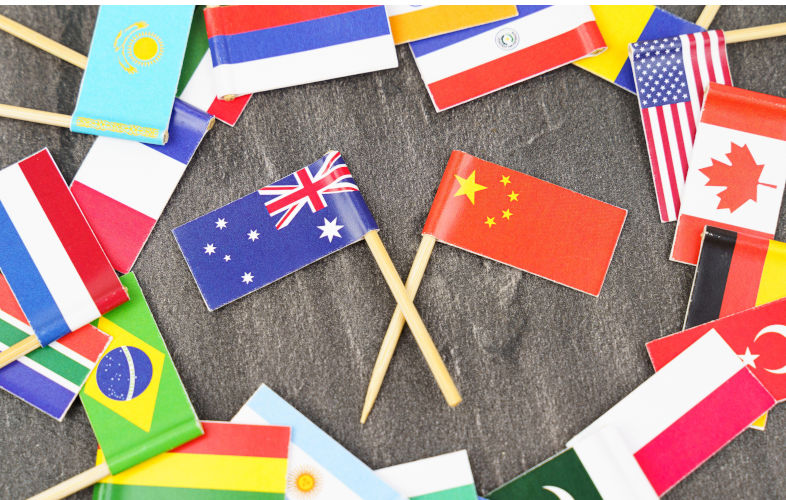Framing the future: Australia’s China policy in the lead-up to the 2025 election
April 29, 2025
In the lead-up to the Australia election, new research examines the ALP and Coalition messaging and policy on the People’s Republic of China.
The report, from the Australia-China Relations Institute at the University of Technology Sydney, examines how these positions are evolving under increased international pressure and domestic scrutiny. The key findings of the report are:
- Labor and the Coalition both emphasise sovereignty and the national interest in their public messaging on the PRC, but diverge in tone and strategic emphasis. Labor leans towards stability and diplomatic management, while the Coalition projects strength through more explicit security framing.
- Labor has sought to present itself as a steady, non-ideological manager of the bilateral relationship, maintaining disciplined messaging and avoiding direct provocation. Its approach may face growing pressure amid global volatility.
- The Coalition has adopted a refined, but still hardline, stance with a tripartite messaging strategy. Opposition Leader Peter Dutton projects strength on national security while engaging constructively on trade and diaspora issues; shadow foreign and trade ministers adopt a pragmatic, moderate approach; and Defence and Home Affairs figures take a firm ideological line on PRC threats. Each portfolio group represents a messaging pillar, with the three pillars together forming a cohesive whole. Whether this balance could be maintained in government, under greater domestic and international scrutiny, remains uncertain.
- Across both parties, Australian-Chinese communities have become pivotal electoral constituencies, prompting sustained efforts at engagement and messaging sensitivity. This evolution reflects the growing recognition that domestic cohesion is inseparable from effective foreign policy.
- While bipartisanship remains the dominant feature of Canberra’s PRC policy, the contours of difference between Labor and the Coalition are becoming clearer. Much of this divergence reflects evolving global dynamics and an increasingly transactional international environment.
- Both parties support expanded trade with the PRC but differ in emphasis. Labor promotes risk-informed engagement grounded in commercial pragmatism while the Coalition frames trade through a more strategic and security-driven lens.
- However, critical minerals have been positioned as central to trade diplomacy for both parties. Labor has aligned more closely with the Coalition’s view that Australia’s resource wealth should be leveraged in alliance-building and strategic negotiations, particularly with Washington.
- Connected technologies like electric vehicles may be a growing fault line between the parties. Labor has thus far prioritised consumer access and affordability, backing PRC-made EVs, while monitoring for risks. The Coalition has taken a harder line – warning of data vulnerabilities and pushing for strict cybersecurity standards, signalling a likely regulatory shift should it win government.
- On the Port of Darwin and Comprehensive and Progressive Agreement for Trans-Pacific Partnership accession, positions converge but are framed differently. Both parties now support ending the PRC-linked lease of the port, with Labor emphasising resilience and domestic investment and the Coalition stressing national security. On the CPTPP, both endorse strict accession standards, but Labor prefers a process-driven approach while the Coalition has exhibited some willingness to frame the issue as values-based.
- Labor is likely to continue to publicly condemn PRC human rights abuses and cyber attacks but avoid unilateral Magnitsky-style sanctions in favour of multilateral diplomacy. The Coalition advocates a firmer approach, including targeted sanctions as a tool of cyber deterrence and values-based policy.
- Foreign interference will remain a national security priority, but approaches are likely to diverge. Labor is likely to maintain a restrained, risk-managed model; the Coalition would take a more interventionist route. While Labor has expanded Australia’s counter-interference toolkit, it has adopted a broadly country-agnostic approach. The Coalition has called for more direct attribution and stronger enforcement. A key priority for the Coalition is the restoration of the Department of Home Affairs to its “rightful place as the pre-eminent domestic national security policy and operations portfolio”. It has also proposed structural reforms, including annual reporting by the Office of National Intelligence and reform of the Foreign Influence Transparency Scheme.
- Both parties support the one China policy and oppose unilateral change to the status quo, but differ in emphasis. Labor maintains strategic ambiguity and prioritises multilateral deterrence, while the Coalition signals closer alignment with US deterrence efforts. AUKUS deepens Australia’s integration with US planning, potentially narrowing future flexibility in any military escalation involving Taiwan.
- Whichever party wins the 2025 election, it will confront a foreign policy landscape defined by intensifying strategic competition and heightened expectations for decisive leadership.
Read the full text of the report below:
Framing the future: Australia's China policy in the lead-up to the 2025 election